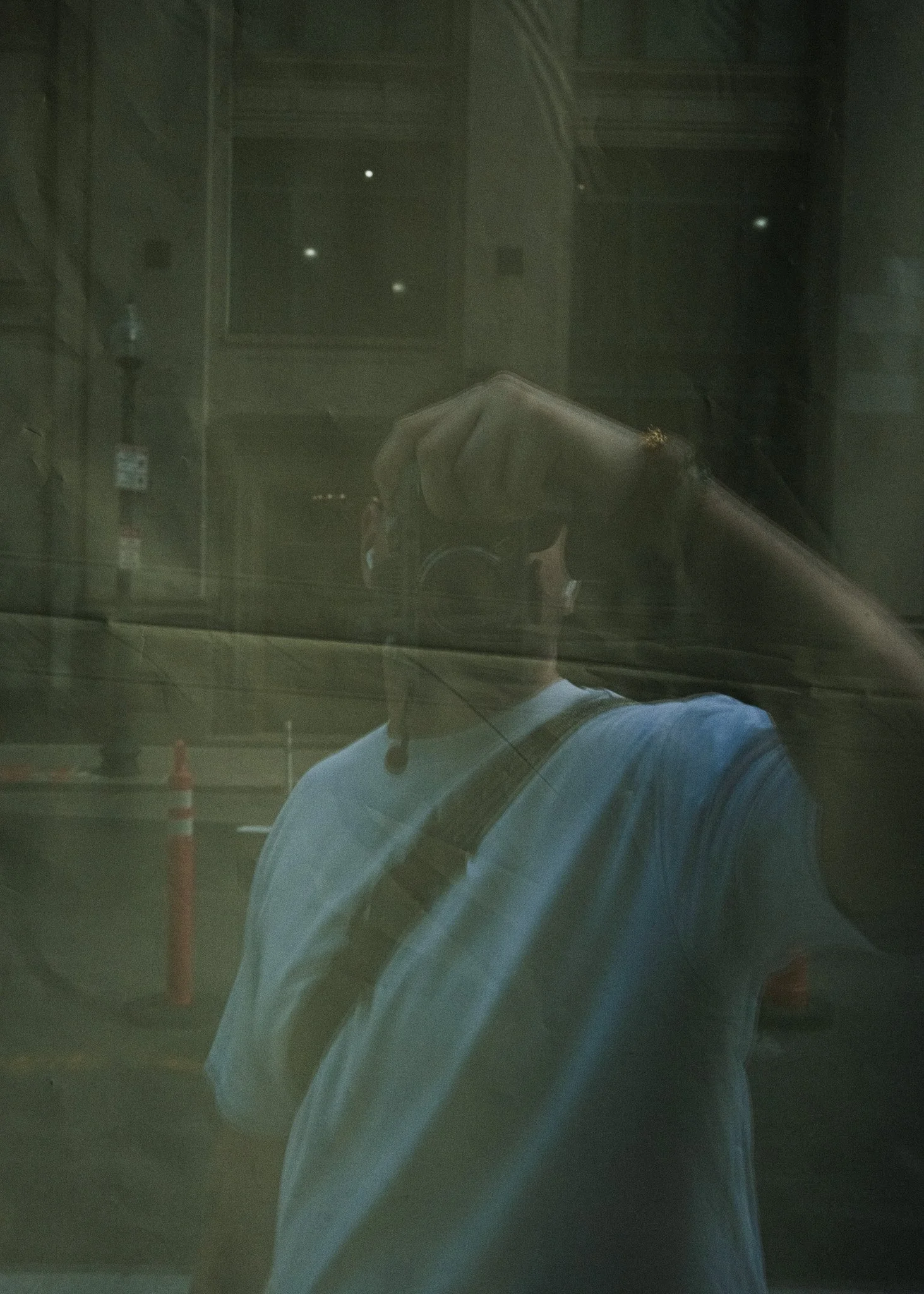Why Documenting Your Life Through Photos Changes Everything
How a simple daily habit can boost your memory, mood, and self‑esteem—no expensive gear required.
We all default to photographing weddings, vacations, and milestones — the “Instagrammable” highlights. Yet life’s real richness lives in the quiet, in‑between moments: the way morning light spills across your desk, your dog’s sleepy yawn (of which I have many pictures!), the funny rock on the road which caught your eye on your walk to work.
When you make a habit of documenting those ordinary slices of life, you build a living archive — one that not only preserves memories but actually rewires how you remember, feel, and see yourself.
In this blog, I am taking a page from my good friend Sam and flexing my scientific side to present you how documenting your life through photography improves your memory, perspective, and self-esteem. I will also give some of my favorite tips on how to incorporate photography into your daily routine.
(FYI - Sam is host of Samsplaining Science, an amazing podcast where she discusses a wide-range of topics by leveraging scientifically-backed data. Check out her website, geek out and give her some love!)
Let’s get nerdy: Scientifically-backed Benefits from Documenting your Life with Photos
Time to dust off my Yale degree and dig into some research. Research linking photography with well-being, wellness and self-esteem is a booming field, with digital photography becoming more accessible to people. Below are 3 of my favorite benefits that have been explored by researchers. Don’t be scared, I will distill the studies and major observations :)
1. Supercharge your memory
A landmark Psychological Science study by Barasch, Diehl, Silverman & Zauberman (2017) found that participants who could freely choose what to photograph during an experience remembered more of the visual details —even if those details were not captured in a photo —than those without a camera.
Interestingly, the study also found that intentional photography boosted participant’s ability to recall aspects and details while off-hand snapshots actually diluted the benefits. This observation was also found in a field study conducted by Niforatos, et. al. (2017) where participants had improved memory recollection when they were limited in the number of photos taken compared to a cohort with automated photography.
Key takeaways:
1. Signal to your brain: Framing a shot is like tagging a moment for your brain to “store this.”
2. Quality over quantity: Mindful selection (take fewer, more meaningful images) yields richer, longer‑lasting recall.
3. Re‑experience: Each time you scroll through your carefully chosen photos, you’re transported back—light, sound, and emotion intact.
Slow down and be present when capturing moments
2. Boosting your Well-Being Through Mindfulness
The studies above discuss how mindful photography can improve memory recollection of experiences. Research also shows how this mindfulness improves overall enjoyment through these experiences.
Diehl & Zauberman (2022) demonstrate how mindful-photo taking leads to improved positive mood and life satisfaction. One example we can all probably relate to is taking pictures of your food. Xiong, Liang, & Wong (2023) demonstrate how “foodstagramming” leads to an improved dining experience and even increases the patronage with customers in establishments where food-photo taking is regarded as the “norm”. In simple terms, customers are more likely to enjoy their food and have an overall greater experience with a restaurants where photos are welcomed or even viewed as “trendy”.
Another midlful practice that has gained popularity in the last 10 years is photojournaling. Photojournaling is a technique where photos are integrated with text, creating a unique and more visually driven way to document one’s life. Dyer (2023) discussed in his study how adopting the practice of daily photography improves well-being by encouraging people to calm their mind to focus on capturing a scene. Brewster & Cox (2018) further elaborate on the photo-a-day practice by suggesting how this habit improves well-being in a multifaceted manner. While superficially, it is viewed as a simple practice to document’s one’s life, other aspects such as creating a routine, accountability and community building is often a secondary medium that positively impacts well-being.
Key Takeaways
1. Stress Reduction on Demand: Framing a single shot acts like a mini‑meditation—slowing your mind and lowering anxiety.
2. Mood Amplifier: Taking pictures can improve your enjoyment of experiences and overall improve mood and morale.
3. Everyday Mindfulness: Regularly photographing small wonders trains you to notice—and appreciate — the beauty in the mundane.
Some snaps from my everyday moments
3. Cultivate Self-Esteem, One Selfie at a Time.
I have discussed in a previous blog how getting into photography improved my self-esteem through self-portraiture. One photographer I recently discovered is Helen Hetkel (@Helen.hetkel), who encourages people to use self-portraiture as a means to self-growth.
Let’s be honest, taking a picture of yourself and posting it online for people to see is a scary activity. I used to drive myself insane overthinking and overnanalyzing what people would think of my selfies. However, it is through that practice that I have also learned to appreciate myself more than ever before.
A study by Chen, Mark & Ali (2016) studied 3 groups of participants: one group was asked to take a selfie with a smiling expression, the second group took a photo of something that would make oneself happy and the third group took a photo of something that would make another person happy. The results suggest that any photo-taking with the intent to increase happiness leads to improved self-esteem. One thing to note, during exit interviews, a majority of study participants indicated having less-pressure taking these pictures, due to the perceived privacy of the platform where those pictures were taken. This suggests that social media platforms, where pictures are more widely distributed, might not have the same positive impact, if one is focused on the external validation associated with taking pictures. This validation-seeking behavior and its detriments on self-esteem in adolescents was observed in a study conducted by Salomon & Spears Brown (2018).
Key Takeaways
1. Self-Affirmation in Action: Smiling or otherwise posing with genuine intent turns a quick selfie into a daily boost of positive self-regard.
2. Balance Feedback: Positive social feedback (likes, comments) can amplify a selfie’s mood-boosting effect, but relying solely on external validation is risky — ground your practice in self-appreciation first.
3. Authenticity Over Perfection: Embracing unfiltered or minimally edited selfies helps reinforce body appreciation and reduces the pitfalls of chasing an unattainable “perfect” look.
I took this self-portrait last week and it is one of my favorites, because I am exuding happiness and I took this image without a worry about what people would think.
Creating an intentional photography practice for your well-being
You did it! Your brain is supercharged with science and are excited to adopt photography for our own personal growth… but how do you start?
Below are some tips I recommend for anyone looking to incorporate photography into their daily habit.
No Fancy Gear Required — Just Curiosity
• Smartphones today rival entry‑level cameras. Don’t worry about settings.
• Natural light is your best “studio.” This can be either in your home or go out during golden hour for a more nostalgic feeling. Experiment with taking pictures at different times of the day!
Anyone can start today—no big investment needed.
How to Build a Daily Photo Habit
1. Set a Reminder. Use your phone alarm or calendar: “Photo Moment.”
2. Shoot & Save. One photo a day — resist perfectionism; just be present and focus on the shot you’re wanting to capture.
3. Review & Reflect. Spend 1–2 minutes looking back. Notice patterns, moods, surprises.
Photo‑a‑Day Prompts to Get You Started
• Morning Light: First beam you see
• Texture Hunt: Brick, wood grain, fabric folds
• Everyday Ritual: Coffee, keys, commute view
• Gratitude Frame: Something you’re thankful for
• Silent Moment: A scene without people
• Hands at Work: Typing, cooking, writing
• Nature’s Surprise: A stray leaf in the city
• Reflection Check: Window, mirror, puddle
• Color Spotlight: Pick one hue each day
By documenting your daily life, you build a visual diary that:
• Anchors you in the present
• Boosts memory and mood
• Grows your confidence
Grab your camera (or phone) and capture one moment today— because your life, in all its quiet magic, is worth remembering.
Saludos!
-A
Call to Action
What did you document today?
Share your favorite shot in the comments—or tag me on Instagram [@adrianlemen] with #DailyPic. Let’s create a gallery of everyday wonder!








